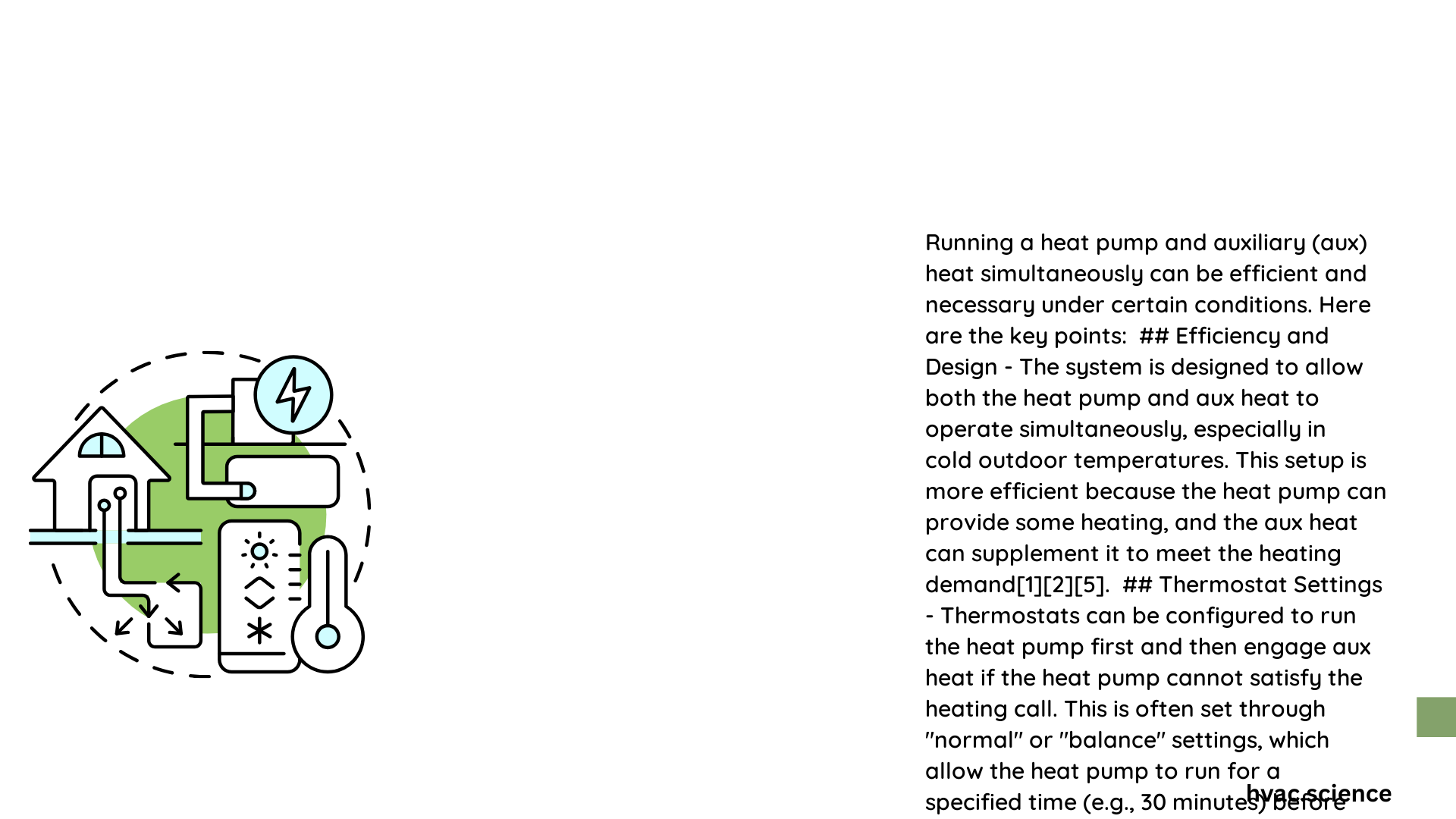Heat pumps and auxiliary heating systems represent a complex thermal management strategy where simultaneous operation depends on specific environmental and technical conditions. Homeowners and HVAC professionals must carefully evaluate temperature thresholds, system efficiency, and energy consumption to determine optimal heating performance. Understanding the intricate balance between heat pump functionality and auxiliary heat activation can significantly impact comfort, energy costs, and overall system longevity.
What Triggers Simultaneous Heat Pump and Auxiliary Heat Operation?
Temperature Thresholds and Performance Dynamics
Heat pump efficiency dramatically decreases as outdoor temperatures drop, typically around 35-40°F. At these temperatures, auxiliary heat becomes crucial for maintaining indoor comfort. The decision to activate auxiliary heat involves multiple factors:
- Outdoor Temperature: Below 35-40°F, heat pump performance declines
- Heating Demand: When heat pump cannot meet required temperature
- System Capacity: Maximum load exceeding heat pump capabilities
Efficiency Metrics Comparison
| Heating System | Efficiency Ratio | Energy Consumption | Performance Characteristics |
|---|---|---|---|
| Heat Pump | 8-10 SPF | Moderate | Variable performance |
| Auxiliary Electric Heat | 1:1 COP | High | Consistent output |
| Gas/Oil Auxiliary Heat | Varies | Lower | Efficient at low temperatures |
How Does Simultaneous Operation Impact Energy Consumption?

Simultaneous heat pump and auxiliary heat operation significantly increases energy consumption. Consider these critical factors:
- Power Consumption Calculation
- Heat Pump: Typically 3-4 kW
- Auxiliary Electric Heat: Around 5-6 kW
-
Total Energy Draw: 8-10 kW per hour
-
Cost Implications
- Higher electricity usage
- Increased monthly utility expenses
- Potential long-term system wear
Technical Compatibility Considerations
System Integration Requirements
- Compatible thermostat controls
- Proper electrical infrastructure
- Matching heating capacities
- Integrated control systems
What Are the Potential Benefits of Simultaneous Operation?
While energy consumption increases, simultaneous operation offers critical advantages:
- Consistent Indoor Temperature
- Improved Cold Weather Performance
- Backup Heating Capability
- Flexible Thermal Management
When Should Homeowners Consider Simultaneous Operation?
Recommended scenarios include:
- Extreme cold weather conditions
- Older or less efficient heat pump systems
- Homes with high insulation requirements
- Areas experiencing rapid temperature fluctuations
Maintenance and Long-Term Considerations
Proper maintenance remains crucial when operating heat pump and auxiliary heat simultaneously:
- Regular system inspections
- Clean air filters
- Check electrical connections
- Monitor overall system performance
- Professional annual HVAC evaluation
Expert Recommendations
- Limit simultaneous operation duration
- Invest in high-efficiency heat pump models
- Consider supplemental heating strategies
- Monitor energy consumption patterns
Conclusion
Simultaneous heat pump and auxiliary heat operation represents a nuanced heating strategy requiring careful evaluation of technical, environmental, and economic factors. Homeowners should consult HVAC professionals to design a customized approach matching their specific requirements.
